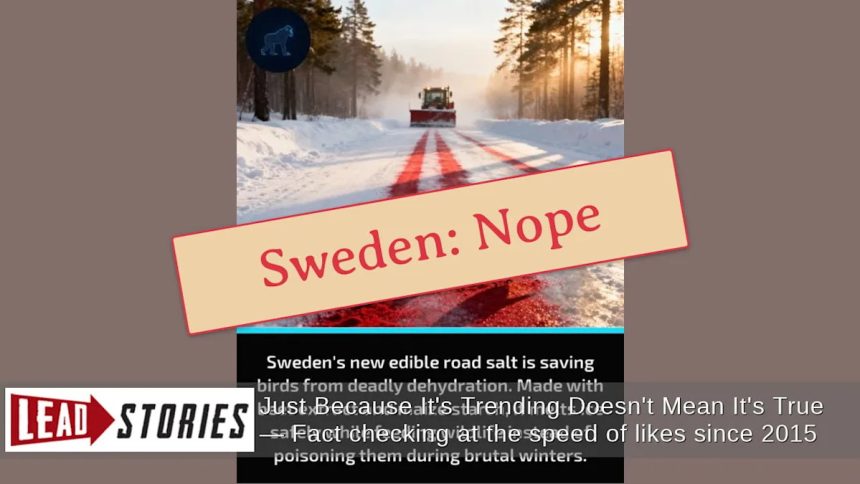Did Sweden start using a red beet-and-starch-based, food-grade de-icing solution on a large scale to combat road icing and save birds suffering from road salt poisoning? No, that’s not true: The Swedish Transport Administration website has a page that explains the the agency did not switch to a new red salt. Lead Stories found no news articles reporting such a switch either.
75
(Source: Lead Stories screenshot of post at facebook.com/groups/1572304983605443)
The post implied that Sweden predominantly switched to a new de-icing agent of the red color, and the agency’s additional goal was to feed birds. Yet, the claim suffered from a broken logic: Had the story been true and birds were indeed attracted to the ingredients, that would have dramatically increased the chances of birds being hit by cars and would have contributed to a spike in traffic accidents.
The article (archived here) linked in the post cited Trafikverket, the Swedish Transport Administration.
However, in the Q&A section about salt on the roads (archived here), that agency explicitly denies the claim:
Right now, false posts about methods for salting roads are being spread on social media. The idea is that we at the Swedish Transport Administration are using a new type of red-colored road salt. This is not true.
Google searches across news articles in English and Swedish did not yield any credible publications reporting that Sweden moved to using edible road salt made with beet extract and maize starch on a large scale:

Source: Lead Stories screenshot of news search results page at google.com
In the fall of 2003, a Swedish public radio broadcaster (archived here) reported (archived here) that the Swedish transportation authorities were to run a series of tests to see if the road salt could be replaced or supplemented with sugar. At the time, an agency representative said that the trials would not check whether wild animals are attracted to the new ingredients, but doubted that they would. In the spring of 2006, the same public radio station reported (archived here) that the preliminary results were successful, but it said nothing about the edibility of the mixture or the purported aim to attract birds to the roads to feed them while ignoring the corresponding safety risks for both humans and wildlife.









